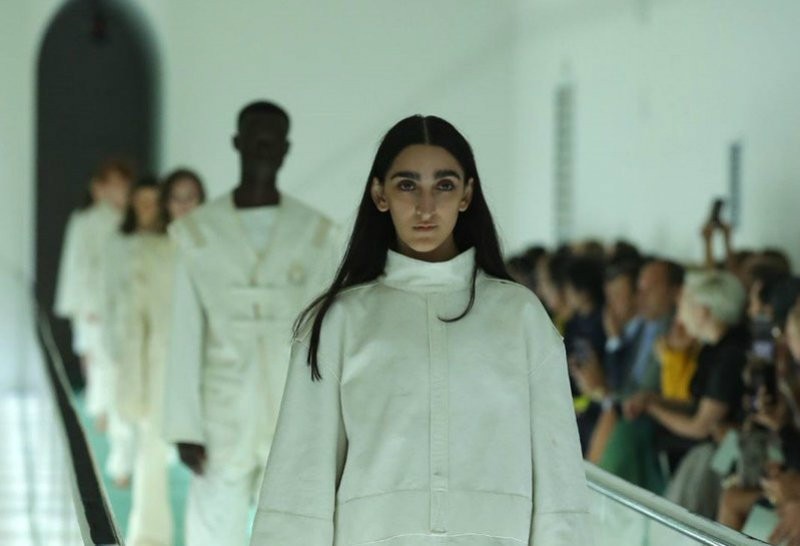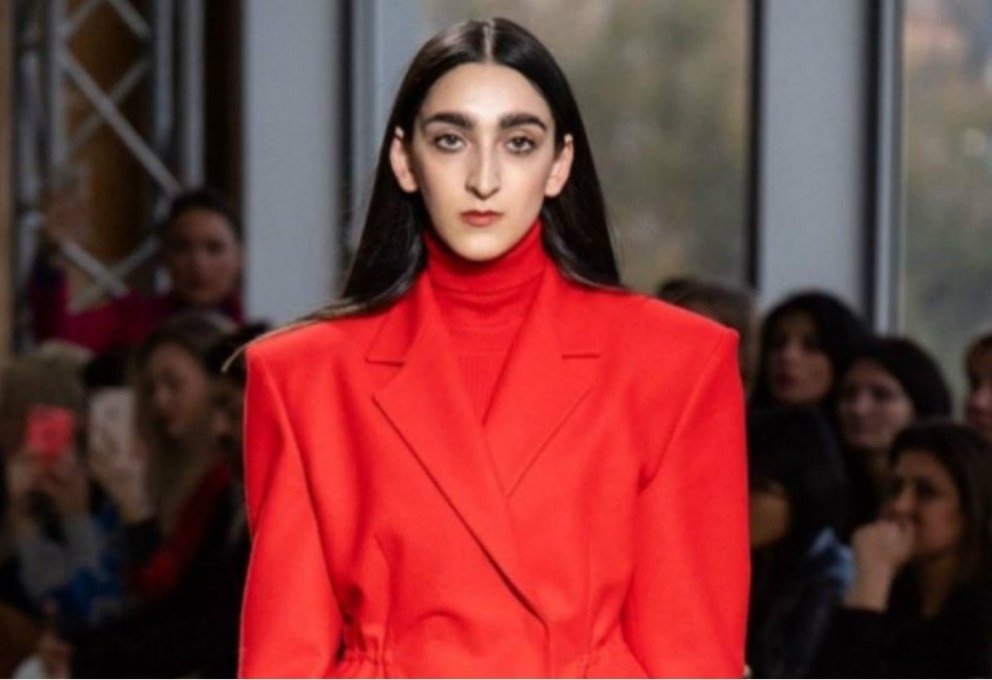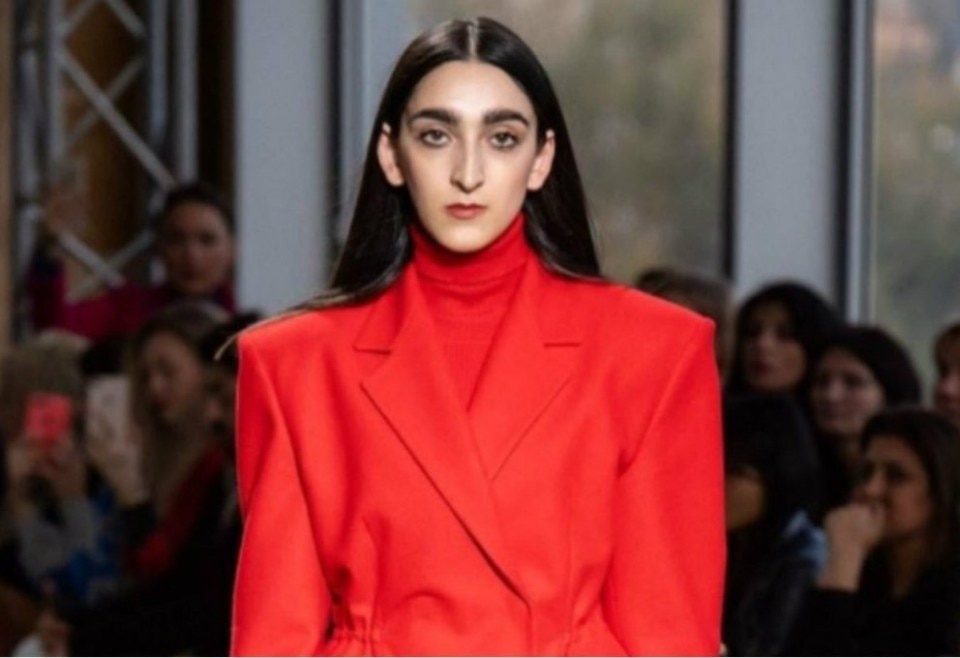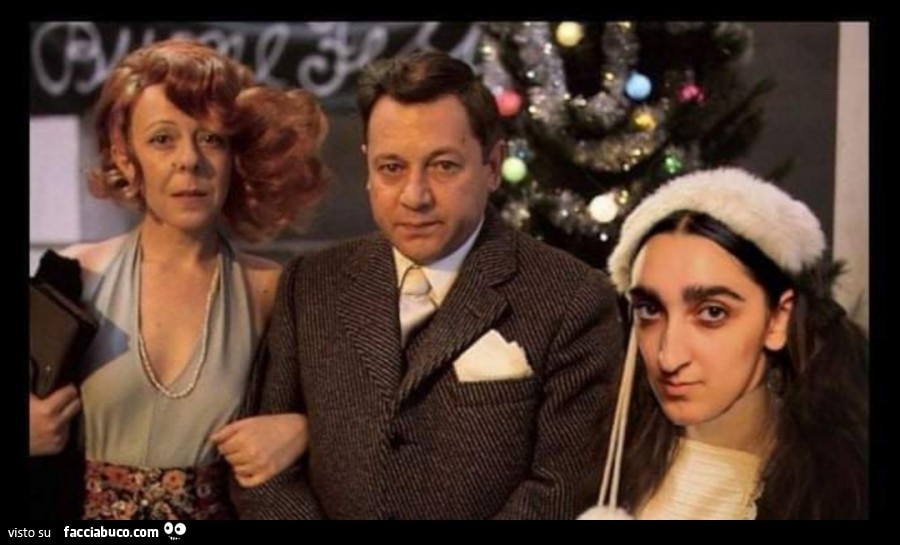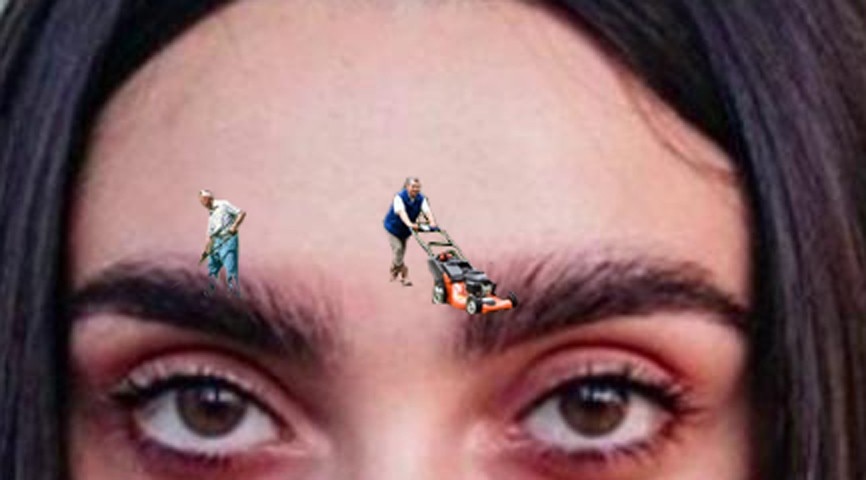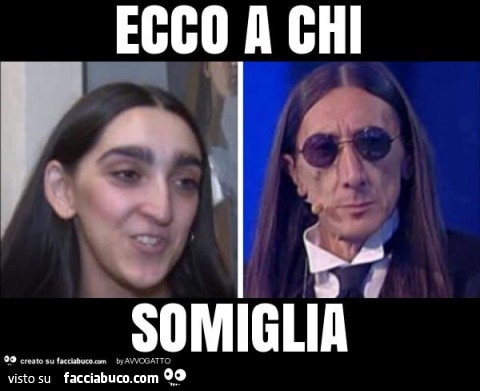Armine Harutyunyan is a 23-year-old model who appeared on the catwalk of Gucci’s Spring/Summer 2020 collection and had already participated to last September’s Milan Fashion Week. Originally from Yerevan, her face fits the Armenian canons, which are very different from those that we are so used to see in all the advertising images. She has a sharp face, hook nose, and thick eyebrows. And this was just enough to give rise to a controversy on the internet, which spread like wildfire especially in Italy, where, in addition to body shaming and tasteless jokes, the people is particularly attached to the right of “being able to say whatever you think” and opposing the “dictatorship of the politically correct”. So, these expressions are not new among the Italian social media users, who for the occasion have adopted particularly grotesque and sexist tones. And yet, it is well known that Gucci, under the direction of Alessandro Michele, is committed to challenging the canons of perfect aesthetics by offering styles closer to our times and to the social changes that are taking place all over the world. These are new paradigms that in the past had already caused scandals: just think of the lipstick commercials starring the ‘unattractive’ mouth of New York punk singer Dani Miller, or the extravagant and genderfluid outfits worn by Achille Lauro during the last Sanremo festival. Ultimately, the great defeat of this whole story is the all-Italian inability to analyze complex issues, thus trivializing their meaning. The missed opportunity lies precisely in the ‘ugly’ as a category, which already exists in the arts and society but takes on different rhythms and implications. This is a necessary obstacle, capable of awakening our conscience and inducing us to get off the beaten track, if necessary. Maddalena Mazzocut-Mis, professor of Aesthetics of Music and Spectacle at the Statale University of Milan, has been focusing on the study of the category of ugly for years now. She will tell us more about the sense of ugliness.
What is ugliness? A byproduct of history, a subjective canon, or what?
The main problem lies in this statement: “it’s ugly.” Commonly speaking, we attribute a negative value to this statement. But it is not necessarily so, or at least it is not so in the field of philosophy of art. Victor Hugo once said: “The beautiful has but one type, the ugly has a thousand”. And he was right: the definition of ugly is as multifaceted and complex as ever. Ugly can be the unsuccessful, the disappointing, but also the morally abject or the technically imperfect. Think of the continuous oscillation between the subjective (the disappointing) and the objective (the technical aspect). We can then distinguish between an ugliness of the object, and an ugliness of its rendering in art, and these two aspects can also coincide but not necessarily. Moreover, what is commonly ugly in nature can become beautiful through art, as is universally known at least from Aristotle onwards. We have a functional ugliness and an anti-functional ugliness, an ugliness by excess, and an ugliness by shortcoming... I am gonna stop here, but I could go on and on and on.
And what is the role of ugliness?
The role of ugliness is to make us open our eyes and, if possible, think. By denying conciliation, in other words by denying the overcoming of ugliness through beauty, we cannot put things back in the right place as we are so accustomed to, and we are left dismayed. From this point of view, ugliness is far superior to beauty, which is reduced to mere conventionality without conflict. Ugliness disrupts and undermines aesthetic hedonism. Hence the positivity of the aesthetic value ugliness, of its revolutionary reach. There is a question that philosophy, or rather Aesthetics, has always been asked to answer: can ugliness be enjoyed? The answer is obviously yes. Sometimes the enjoyment of ugliness is more complex and articulated than the enjoyment of beauty. An enjoyment that for years has been described as a negative emotion but not so much to make us withdraw; a contradictory emotion; an emotion that can disturb us, but without making us feel disgusted. It is possible, and has been so for many artists, to see in ugliness connections with the caricatured and the grotesque, because of the desecrating tension that animates it. In short, judging an artistic object as ugly, when ugly is an aesthetic category, does not necessarily have to do with a value judgement, but more with a ‘descriptive’ manner to allow the user to recognize and understand the object.
What are the modalities of ugliness in history?
Art has always represented ugliness (I’m thinking of the Thersites of Homer, for example) and also horror and even disgust. But it was only in the eighteenth century that Aesthetics took an interest in the ugly as an aesthetic category with a positive value. Ugliness gradually became expression, while beauty, with its harmony and balance of forms and colours, became a superficial conciliation. Ugliness allows us to see things for what they are. And not only: it can also hold a hope of redemption. Adorno supports the need for aesthetic salvation in this category. The aesthetic meaning of ugliness is recovered through its power of desecration.
Does it make sense to talk about objective beauty and subjective taste? Or what’s been happening in recent years (the #metoo and BLM movements) should make us consider putting our beliefs into perspective?
Attributing a positive value to ugliness was philosophy’s greatest challenge. Now, art, as I said, has always represented the ugly, seeing in it a desecrating and provocative value; philosophy has followed it, reflected and meditated on the category of the ugly. Society, on the other hand, is way behind. Above all, a society such as ours is pervaded by what is the real dominant category, that is kitsch, which comes with an obvious beauty that has no traumas and neither requires to make choices or take stands. The world is slowly waking up, understanding that the real revolution is simply to accept and therefore show on our bodies the revolutionary power of ugliness. But it is very late.
So, what is it about Armine Harutyunyan that makes everyone so fired up?
The lack of preparation of an ‘old’ society. Of a society that does not accept the idea or that is frightened by the idea that ugliness is more powerful than beauty. The ugly, the unconventional in the case of Armine Harutyunyan, strikes us, makes us think, especially when it takes the thunder away from beauty, which has been under the spotlight for thousands of years without a reason.
We think that beauty is exceptional. Actually, ugliness is exceptional. Beauty, a beauty to which our eyes and senses are accustomed, is not exceptional at all: we see it constantly in that world far from reality represented by the mass media. But the ugly that is next to us, when it invades the ground of granted beauty... this is powerful and exceptional!
Can you cite any similar cases from art history or history in general? Or staging ugliness is only typical of our society?
In art, not only do we accept ugliness – we seek it. Just think of the dominant role it played in the twentieth century. A role that, nowadays, has even lost its revolutionary value. Let’s take Manzoni’s Artist’s shit, made in 1961, which wanted to reveal the mechanisms and contradictions of the contemporary art system, and in fact, became a part of it. The use of bodily fluids has been an established practice for many years and more and more often in our times the use of excrements or semen or menstrual blood is nothing more than a way to quote a practice that was very famous in that century. I wonder: can one talk of ugliness in front of an exhibition of corpses, of organic residues, of events that arouse horror and disgust? Can we talk about ugliness when we are faced with a deformed, open, decomposed, hybridized body? I think we should talk about other categories. Abjection and obscene deserve to be distinguished on the theoretical level and identified as artistic practices.
Has it ever happened that the ‘ugly’ became a model for society?
The most disturbing aspects of the imaginary of a society undergoing a crisis are usually represented through ugliness, and the value of art tends to coincide more and more with its ability to address the most senseless aspects of life. Surely art produces much more ugliness than beauty, much more kitsch than ugliness. Now, it is difficult to say whether this has directly influenced society. The society welcomes much more favorably what distracts and amuses us. When Adorno affirmed that ugliness is a necessary component of art, that it is not only about violence and destruction, but can be found in the hidden folds, in the irresoluble residues, in the background of pain on which beauty stands, he made ugliness a necessary evil, a wake-up call to conscience. But since beauty has come to terms with the art market, the ugly loses its power of desecration and becomes simply tacky. In short, in art ugliness is outdated. In our society, on the other hand, it has not even begun to do its job.
We are living in a world were digital globalization is being taken to extremes. Does it make sense to talk about ‘objective’ and ‘subjective’ values? Could something that is ugly to us be beautiful to someone else?
This question ‘works’ better with the word disgust, rather than ugliness. Think of a food that in the East is considered a delicacy, and for us is repulsive... After all, in the era of globalization, beauty is often a commonly accepted and widespread standard, we see it everywhere in the media, movies, series, and especially in fashion. One can hardly resist an imposition of beauty that is a standard of our society and the global market.
And what role does fashion play in defining beauty? Has it always had a role in it?
At the end of the nineteenth century, thanks to the spread of fashion and the unstoppable progress in the aestheticization of commerce and entertainment, the work of art - reduced every day more and more to the status of mere museum fetish – was kind of dethroned, and we witnessed the possibility of elevating to the status of objects with a great aesthetic value other modern phenomena - whether or not they were works of art. Art loses its role. It no longer dictates the laws of beauty. It is fashion that dictates the canons now. Art is full of ugly things. Fashion, instead, strenuously defends beauty and hardly ever uses the term “ugly”. Perhaps this is why Armine Harutyunyan has caused such a great stir. She has been called “ugly” and this element has been incendiary for two main reasons: she has given the term ugly a unique negative value - which has been lost in art for centuries - and above all - but in this sense has had a revolutionary power - she has brought this term into the bastion of beauty: fashion.
Then there is theater and performing arts: what’s it like in this sector when it comes to ugliness?
Body art has inspired a still very active theatrical strand that shows bodies of men, women and children with different pathologies: sick bodies, anorexic or bulimic bodies, suffering from syndromes linked to chromosomal aberrations, psychiatric pathologies, and so on... Here the ugly, in the sense of anti-athleticism, becomes a show. Artists like Tadeusz Kantor, Pippo Delbono and Castellucci create dialogues between bodies, between forces in tension, then between dynamic structures that unfold, cross, overload, crumble. Here the ugly embodies (literally turning into flesh) the revolution and breaks all kinds of stereotypes.
Let’s wrap this interview up. What about the universal myth of the ugly duckling, the ugly that becomes beautiful? It’s one of the key narratives of our age. With all the digital and surgical touch-ups here and there an exaggerated beauty, dangerously close to perfection, is affirming itself on all social media.
In this case, I would not talk about beauty but rather about kitsch, which could also be described as the greatest antagonist of ugliness. Kitsch is a complacent, protective and intoxicating image of the present; it gives the illusion of beauty and opposes ugliness. What we see is a simple beauty, easy to obtain. Because if you do not meet the ideal standards (an ideal that is completely subjective and mediated by mass media icons), then, with a simple surgical operation - no matter how expensive or well done - you can achieve it, thus feeling a sense of happiness that only lasts a second. There no longer is the critical solicitation that ugliness always causes. With kitsch, there is no knowledge, no choice. Kitsch does not involve any educational or pedagogical form: it is a playful pastime. Ugliness, on the contrary, is not a simple pastime.
We are therefore facing a sort of antithetical duality: on one side we have ugliness, and on the other, we have kitsch, and everything that comes with it.
If kitsch is a sort of antibody against the mal de vivre (illness, old age, not fitting in when it comes to the rhythms or standards imposed by society) ugliness brings us back to the contradictory and complex reality. If kitsch is a safe place filled with easy and trivial things, ugliness leaves us helpless and defenseless. You do not need culture or any specific preparation to enjoy kitsch. The meaning is always clear, conventional, and therefore universal. Enjoying the kitsch is a game that must be taken seriously, but it still is a game. Ugliness is not a game, and always implies taking a stance.
Opening image: Armine Harutyunyan during a Gucci fashion show


